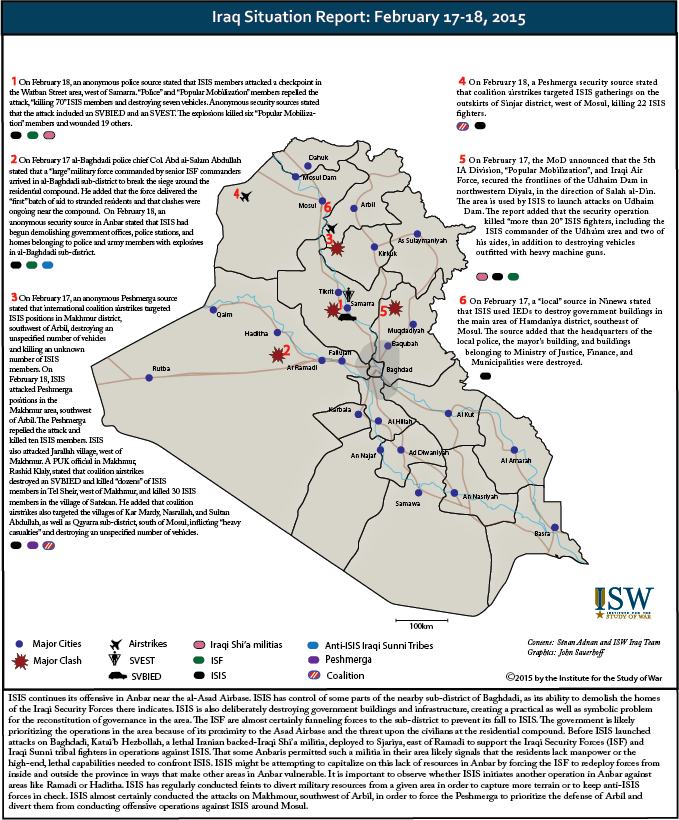Key Takeaway:
ISIS continues its offensive in Anbar near the al-Asad Airbase. ISIS has control of some parts of the nearby sub-district of Baghdadi, as its ability to demolish the homes of the Iraqi Security Forces there indicates.
ISIS is also deliberately destroying government buildings and infrastructure, creating a practical as well as symbolic problem for the reconstitution of governance in the area. The ISF are almost certainly funneling forces to the sub-district to prevent its fall to ISIS. The government is likely prioritizing the operations in the area because of its proximity to the Asad Airbase and the threat upon the civilians at the residential compound.
Before ISIS launched attacks on Baghdadi, Katai’b Hezbollah, a lethal Iranian backed-Iraqi Shi’a militia, deployed to Sjariya, east of Ramadi to support the Iraqi Security Forces (ISF) and Iraqi Sunni tribal fighters in operations against ISIS. That some Anbaris permitted such a militia in their area likely signals that the residents lack manpower or the high-end, lethal capabilities needed to confront ISIS. ISIS might be attempting to capitalize on this lack of resources in Anbar by forcing the ISF to redeploy forces from inside and outside the province in ways that make other areas in Anbar vulnerable.
It is important to observe whether ISIS initiates another operation in Anbar against areas like Ramadi or Haditha. ISIS has regularly conducted feints to divert military resources from a given area in order to capture more terrain or to keep anti-ISIS forces in check. ISIS almost certainly conducted the attacks on Makhmour, southwest of Arbil, in order to force the Peshmerga to prioritize the defense of Arbil and divert them from conducting offensive operations against ISIS around Mosul.
Source: IWS








Comment here